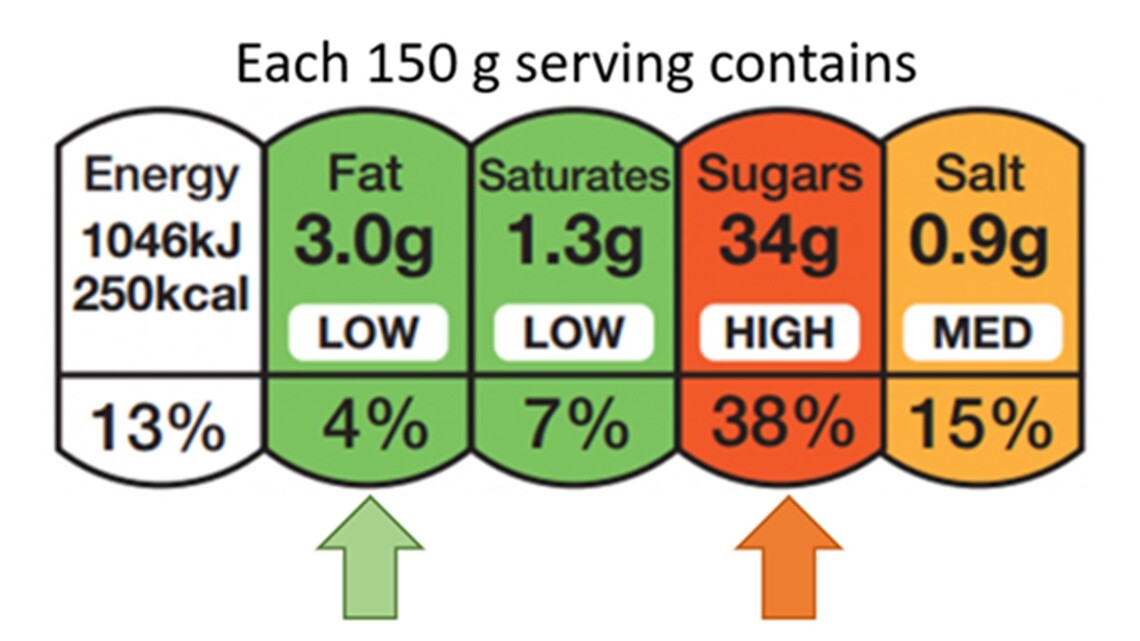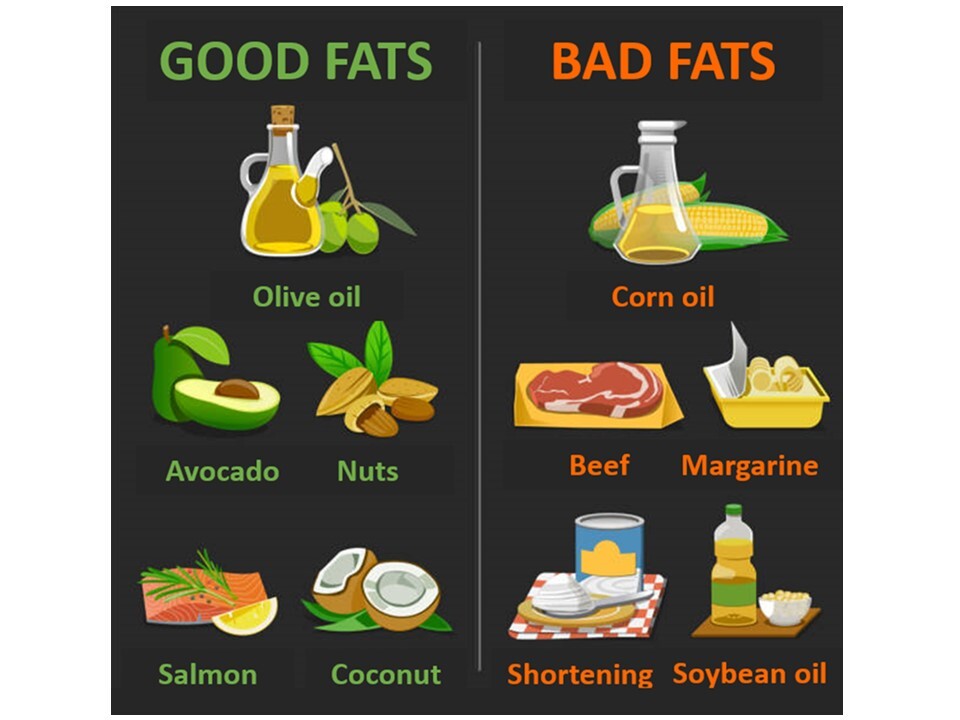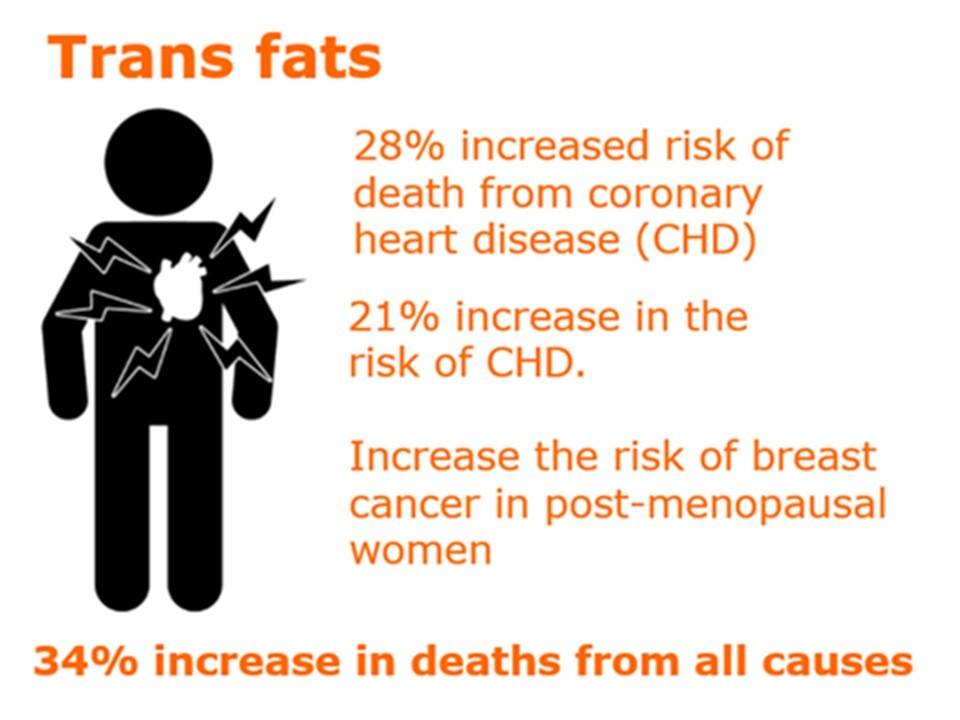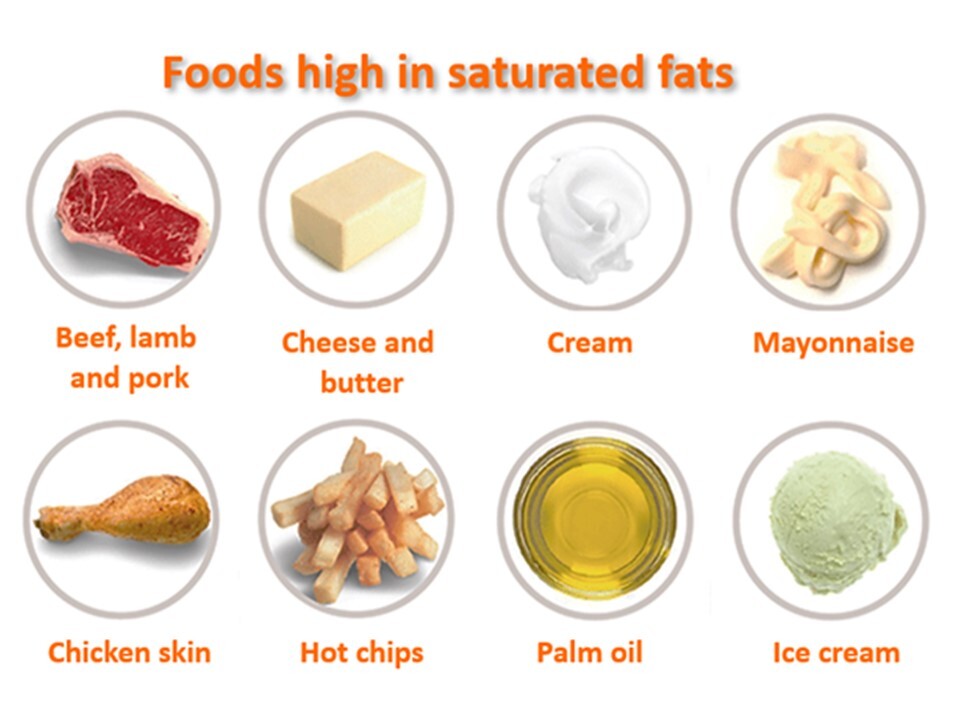In 2014, a book titled The Big Fat Surprise was published and received many positive reviews. Its author, investigative journalist Nina Teicholz, had revisited the research that suggested that fat is bad for us and found it seriously flawed. She concluded that we should be eating more fat, not less. This Age Watch article gives you information about both sides of the ‘good fats vs bad fats’ argument.
- Our bodies need fat
- The good fats: Monounsaturated fats and Omega-3 fatty acids
- The bad fats: Trans fats
- Saturated fats: Good or bad for us?
- Low-fat foods in the supermarket
- Conclusions
Our bodies need fat
We need fat from our food, as fat is a major source of energy. Fat helps us absorb some vitamins and minerals, and it is essential for blood clotting and muscle movement. It also helps fight inflammation. That’s the verdict of a 2019 article in Harvard Health Publishing.
However, there are different types of fat – good and bad – each with different implications for our health. Here are some examples:
The good fats: Monounsaturated fats and Omega-3 fatty acids
Monounsaturated fats and polyunsaturated fats are widely regarded as good fats, as they are important for our physical well-being.
Sources of good fats
There are three main sources of ‘good fats’:
|
|
|
We describe in other articles on the Age Watch website evidence for the health benefits of olive oil (a monounsaturated fat) and oily fish such as salmon, mackerel and sardines (rich in polyunsaturated Omega-3).
Olive oil
|
Olive oil is an important part of the Mediterranean Diet, which studies have suggested can reduce the risk of heart attacks, strokes and obesity, and help manage type 2 diabetes. |
Olive oil’s health benefits are provided at low temperatures. However, when cooked at high temperatures, olive oil can form various harmful compounds which can contribute to cancer. That’s because olive oil, with its relatively low smoke point of 325 to 375°F (165 to 190°C), degrades more than other oils when exposed to high heat.
A 2022 long-term observational study of more than 90,000 people in the US also suggests that regular consumption of olive oil reduces the risk of an early death by between 17% and 29%. These early deaths were from causes such as cardiovascular disease, cancer, and neurodegenerative disease.
Polyunsaturated fats
We also need Omega-6 foods (like vegetable oils). However, too much Omega-6 fat can be bad for us, especially when fried, cooked at a high temperature or used in processed foods. So we should eat at least an equivalent amount of Omega-3-rich foods (like oily fish) to compensate.
In addition, Omega-9 fatty acids are claimed to have a number of health benefits, including helping with asthma, diabetes and high blood pressure. They are commonly found in some animal fats and in vegetable oils like canola oil, sunflower oil, olive oil, sesame oil and nut oils, as well as in nuts such as almonds, peanuts and walnuts. However, these fatty acids have been less well-studied, so more research is needed.
Mixtures of fats
Vegetable oils contain a mix of different types of fat*. Of all commonly used cooking oils or fats, olive oil has the highest proportion of monounsaturated fats, sunflower oil the highest polyunsaturated fats (Omega-6), and coconut oil the highest saturated fat. including beef dripping.
|
* Although coconut oil has a high level of saturated fats (the 'bad fats'), they are in a form that we don't digest. Our bodies absorb the saturated fats in coconut oil directly into our blood rather than storing them as body fat We can therefore use these saturated fats for instant energy, as an alternative to glucose. |
The types of fat most research indicates is bad for us are the trans fats, sometimes known as ‘hydrogenated’ fats, so-named because hydrogenation is the chemical process that changes liquid oils into solid fats. It is this chemical process that is believed to lead to increased health risks.
Foods that might contain trans fats include:
- Some fast foods, snack foods and fried food (including French fries/chips, fried chicken, chicken nuggets and cookies/biscuits.
- Commercially pre-prepared products, such as pie crusts, pizza dough, and cookie dough.
- Some pastries, doughnuts, and pies.
From a systematic review of the evidence, published in the BMJ in 2015, the consumption of trans fats was associated with some serious health issues:
In 2018 iNews reported that members of the British Retail Consortium, which includes the major UK supermarkets and fast food chains had stopped using trans fats as an ingredient in food – but that food imported from outside the UK could still contain them, that there is no legal requirement to place warning labels on food, and that around one percent of our daily calories still comes from trans fats.
A 2015 report in The Guardian claimed that 7,200 lives each year could be saved in the UK if trans fats were banned completely. This suggests that there is still room for improvement.
|
As part of a healthy diet, you should try to cut down on foods and drinks that are high in saturated fats and trans fats and replace some of them with unsaturated fats. (NHS) |
Saturated fats: Good or bad for us?
Saturated fats are typically found in these foods:
The official verdict on saturated fats
A range of respected health organisations have advised that we limit saturated fat consumption to reduce the risk of heart disease. These organisations include the NHS in the UK, the US Food and Drug Administration and the European Food Safety Authority.
Reviews of the evidence
However, the book The Big Fat Surprise ('Why butter, meat, and cheese belong in a healthy diet') suggested that the original studies which led to saturated fats being seen as a risk to health were significantly flawed. The studies didn’t explain why many people eating high-fat diets around the world (from the Masai in Africa to the Inuit peoples in the Arctic) were healthy and did not experience high levels of heart disease.
More recently, systematic reviews of the evidence have also suggested that saturated fats are not a particular health risk. For instance, a 2015 review in the BMJ found no clear association between a higher intake of saturated fats and all-cause mortality, coronary heart disease (CHD), CHD mortality, ischaemic stroke (when a blood clot blocks the flow of blood and oxygen to the brain), or type 2 diabetes among apparently healthy adults.
A 2020 review of the evidence found that a reduction of saturated fat intake had no beneficial effect on cardiovascular disease (CVD) or total mortality. Instead, the review found protective effects against stroke. The review noted, for instance, that whole-fat dairy, unprocessed meat, and dark chocolate are SFA-rich foods with a complex matrix that are not associated with increased risk of CVD.
It is also argued that the move away from eating foods that are high in saturated fat has led to an increased consumption of carbohydrates and sugary ‘low fat’ products, thus potentially increasing the risk of obesity and type 2 diabetes.
The bottom line
The controversy over saturated fats is likely to continue, although evidence of its positive effects seems to be growing. Given current evidence, it would seem sensible to include saturated fats in our diet rather than consuming too many carbohydrates or sugary ‘low fat’ foods as alternatives. At the same time, we shouldn’t consume too much fatty or processed meat or dairy products.
Low-fat foods in the supermarket
We can convert sugar in our diet into fat in our bodies, so switching to ‘low-fat’ foods which are rich in hidden sugar is not the solution for a healthier diet. Check the sugar content in low-fat foods before you buy them.
Here’s an example of a food label for a low-fat food item. Notice that although the fat content is low, the sugar content is high, potentially increasing the risk of obesity and type 2 diabetes.

- Our bodies need fat to function well.
- Eat foods like olive oil and nuts (good sources of monounsaturated fat and Omega-9 fatty acids).
- Also eat food like oily fish and walnuts (containing Omega-3 fatty acids).
- However, try to avoid trans fats. Check food labels for trans fats and hydrogenated fats and avoid biscuits, pastries, fried food and processed snack foods.
- Don’t switch to eating more carbohydrates or sugary ‘low fat’ foods, as these increase the risk of obesity and type 2 diabetes.
- It is still considered healthy to eat meat and dairy products (sources of saturated fats), but only in moderate amounts.
- Include in your diet foods like vegetable oils, pumpkin seeds and soy milk if you wish (as sources of Omega-6 fatty acids), but again, only in moderate amounts.
Kirulagini Sivamathavan, January 2022. Next review date, December 2025.
Other relevant articles on the Age Watch website:
- Diet: What is the Mediterranean diet?
- Diet: Mediterranean diet health benefits
- Diet: Salt, sugar and fat
- Diet: What determines our food choices, and how does this affect our health?
- Diet: Vitamins and minerals
- Tackling obesity: Junk food syndrome?



